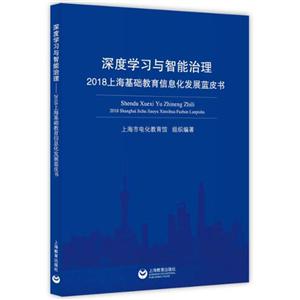量子机器学习中数据挖掘的量子计算方法

|
量子机器学习中数据挖掘的量子计算方法作者:维特克 开 本:16开 书号ISBN:9787560357591 定价:98.0 出版时间:2016-01-01 出版社:哈尔滨工业大学出版社 |
量子机器学习中数据挖掘的量子计算方法 本书特色
《量子机器学习中数据挖掘的量子计算方法(英文版)》分三个部分对量子机器学习中数据挖掘的量子计算方法进行了介绍,第壹部分对基础概念进行了整体概述,例如,机器学习、量子力学、量子计算等,第二部分介绍了经典的学习算法,第三部分介绍了量子计算与机器学习。这本书综合了广泛的调查研究形成,采用简洁的表达形式,并配以应用、实践的例子。
量子机器学习中数据挖掘的量子计算方法 内容简介
《量子机器学习中数据挖掘的量子计算方法(英文版)》由哈尔滨工业大学出版社出版。
量子机器学习中数据挖掘的量子计算方法 目录
目录 PrefaceNotations
PartOne FundamentaIConcepts
1 Introduction
1.1 Learning Theory and Data Mining
1.2 Why Quantum Computers?
1.3 A Heterogeneous Model
1.4 An Overview of Quantum Machine Learning Algorithms
1.5 Quantum—Like Learning on Classical Computers
2 Machine Learning
2.1 Data—DrivenModels
2.2 FeatureSpace
2.3 Supervised and Unsupervised Learning
2.4 GeneralizationPerformance
2.5 ModeIComplexity
2.6 Ensembles
2.7 Data Dependencies and ComputationalComplexity
3 Quantum Mechanics
3.1 States and Superposition
3.2 Density Matrix Representation and Mixed States
3.3 Composite Systems and Entanglement
3.4 Evolution
3.5 Measurement
3.6 UncertaintyRelations
3.7 Tunneling
3.8 Adiabatic Theorem
3.9 No—CloningTheorem
4 Quantum Computing
4.1 Qubits and the Bloch Sphere
4.2 QuantumCircuits
4.3 Adiabatic Quantum Computing
4.4 QuantumParallelism
4.5 Grover's Algorithm
4.6 ComplexityClasses
4.7 QuantumInformationTheory
Part Two ClassicalLearning Algorithms
5 Unsupervised Learning
5.1 Principal Component Analysis
5.2 ManifoldEmbedding
5.3 K—Means and K—Medians Clustering
5.4 HierarchicalClustering
5.5 Density—BasedClustering
6 Pattern Recogrution and Neural Networks
6.1 ThePerceptron
6.2 HopfieldNetworks
6.3 FeedforwardNetworks
6.4 DeepLearning
6.5 ComputationalComplexity
7 Supervised Learning and Support Vector Machines
7.1 K—NearestNeighbors
7.20ptimal Margin Classifiers
7.3 SoftMargins
7.4 Nonlinearity and KemelFunctions
7.5 Least—SquaresFormulation
7.6 Generalization Performance
7.7 Multiclass Problems
7.8 Loss Functions
7.9 ComputationalComplexity
8 Regression Analysis
8.1 Linear Least Squares
8.2 NonlinearRegression
8.3 NonparametricRegression
8.4 ComputationalComplexity
9 Boosting
9.1 WeakClassifiers
9.2 AdaBoost
9.3 A Family of Convex Boosters
9.4 Nonconvex Loss Functions
Part Three Quantum Computing and Machine Learning
10 Clustering Structure and Quantum Computing
10.1 Quantum Random Access Memory
10.2 Calculating Dot Products
10.3 Quantum Principal Component Analysis
10.4 Toward Quantum Manifold Embedding
10.5 QuantumK—Means
10.6 QuantumK—Medians
10.7 Quantum Hierarchical Clustering
10.8 ComputationalComplexity
11 Quantum Pattern Recognition
11.1 Quantum Associative Memory
11.2 The Quantum Perceptron
11.3 Quantum Neural Networks
11.4 PhysicaIRealizations
11.5 ComputationalComplexity
12 QuantumClassification
12.1 Nearest Neighbors
12.2 Support Vector Machines with Grover's Search
12.3 Support Vector Machines with Exponential Speedup
12.4 ComputationalComplexity
13 Quantum Process Tomography and Regression
13.1 Channel—State Duality
13.2 Quantum Process Tomography
13.3 Groups, Compact Lie Groups, and the Unitary Group
13.4 Representation Theory
13.5 Parallel Application and Storage of the Unitary
13.6 Optimal State for Learning
13.7 Applying the Unitary and Finding the Parameter for the Input State
自然科学 物理学 原子核物理学高能物理学
在线阅读
- 最新内容
- 相关内容
- 网友推荐
- 图文推荐
零零教育社区:论坛热帖子
| [高考] 2022 西安电子科技大学《软件工程》大作业答案 (2022-04-25) |
| [家长教育] 孩子为什么会和父母感情疏离? (2019-07-14) |
| [教师分享] 给远方姐姐的一封信 (2018-11-07) |
| [教师分享] 伸缩门 (2018-11-07) |
| [教师分享] 回家乡 (2018-11-07) |
| [教师分享] 是风味也是人间 (2018-11-07) |
| [教师分享] 一句格言的启示 (2018-11-07) |
| [教师分享] 无规矩不成方圆 (2018-11-07) |
| [教师分享] 第十届全国教育名家论坛有感(二) (2018-11-07) |
| [教师分享] 贪玩的小狗 (2018-11-07) |






